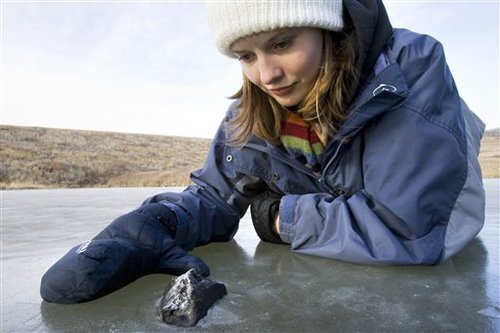Buzzard Coulee
Buzzard Coulee is an ordinary (H4) chondrite that fell November 20th, 2008, in rural Saskatchewan, Canada.
The associated fireball was quite visible, and was witnessed by several; according to the Meteoritical Bulletin (MB 95):
"A bright fireball was widely observed across Alberta, Saskatchewan and Manitoba during late twilight on November 20, 2008. The fireball and subsequent dust trail, or shadows cast by the fireball, were recorded by all-sky and security video cameras establishing that its brightest portion occurred from 17:26:40 to 17:26:45 MST. The fireball traveled approximately north to south with an elevation angle of ~60°. Abundant sonic phenomena were reported including anomalous sounds, explosion booms, sonic booms from individual fragments and whirring sounds interpreted as produced by individual fragments falling to ground; the fireball’s explosions were also widely recorded by Comprehensive Test Ban Treaty infrasound stations establishing an energy release of approximately one third of a kiloton, indicating an original meteoroid mass of ~10 tons. Interviews of eyewitnesses and crude calibrations of security cameras constrained the fall region and the first search attempt led to meteorites being recovered off the ice of a manmade pond late on November 27, 2008. Subsequent searches led to recovery of more than one hundred individual fragments before December 6 when increasing snow cover made further searching unproductive. A strewn field at least seven kilometers long and approximately three km wide with a wind drift tail of an additional three km eastwards has been crudely outlined."
Over 40 kilograms of the Buzzard Coulee meteorite have been recovered to date.

Photo credit: AP Photo/The Canadian Press, Geoff Howe